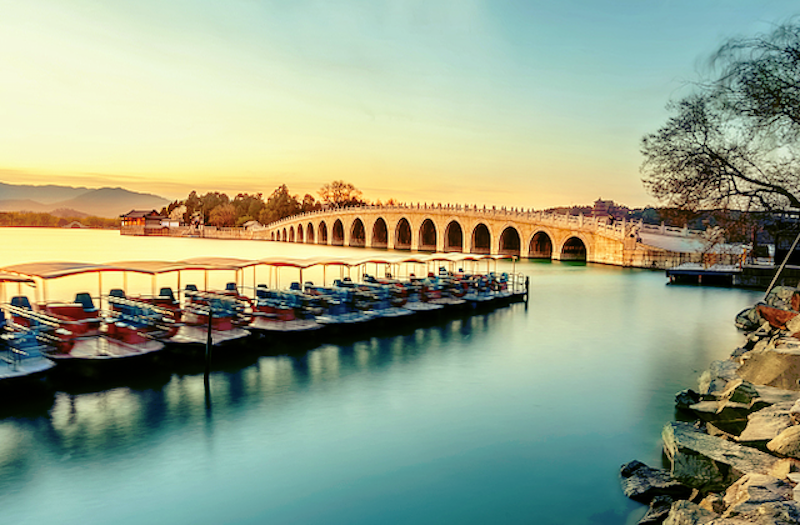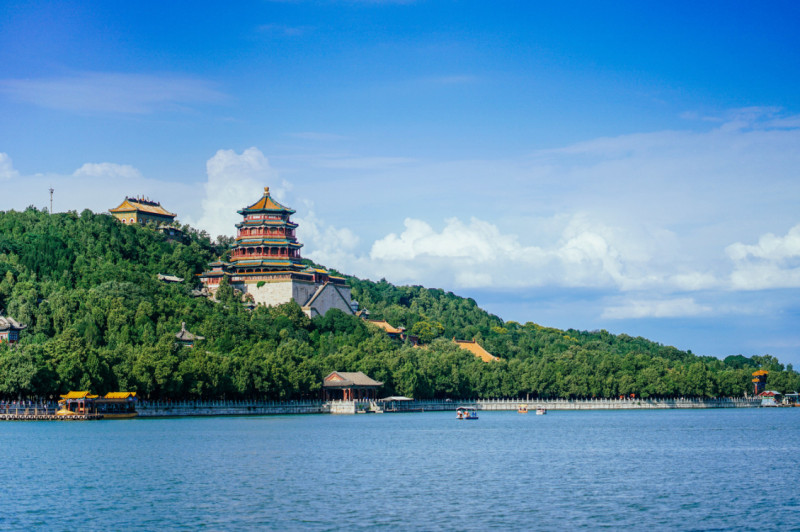Summer Palace

[Photo via VCG]
The Summer Palace is the largest and best-preserved imperial garden in China, and one of the four most famous gardens in the country (along with Chengde Mountain Resort, and Humble Administrator's Garden and Lingering Garden in Suzhou). Situated in Haidian District, it is 15 kilometers from downtown Beijing, covering an area of about 290 hectares. The large natural landscape garden is based on Kunming Lake and the Longevity Hill, and modeled on the scenery of the West Lake in Hangzhou, drawing some design techniques and artistic conception from gardens in the Jiangnan region (a region to the south of the lower reaches of the Yangtze River). As the best-preserved imperial resort, it is renowned as a museum of the imperial gardens.

[Photo via tuchong.com]
The Summer Palace was used as a summer retreat and garden by emperors of the Qing Dynasty. Formerly known as Qingyiyuan (Gardens of Clear Ripples), it was the last imperial garden built among the "Three Hills and Five Gardens" (the "Three Hills" refer to the Longevity Hill, the Fragrant Hill, and the Jade Spring Hill, while the "Five Gardens" refer to the Summer Palace, Jingyi Garden and Jingming Garden built on the three aforementioned hills respectively, as well as Changchun Garden and the Old Summer Palace nearby.) Its construction began in 1750 and was completed in 1764. The garden covers an area of about 290 hectares, of which water surface accounts for three quarters.
Before the reign of Emperor Qianlong, four large imperial gardens had been built in the western suburbs of Beijing. From Haidian to the Fragrant Hill, these four gardens were self-contained, without connections to each other, and Wengshan Pond in the middle was an open field. In 1750, Emperor Qianlong spent 4.48 million taels of silver to build the field into Qingyiyuan for his mother, Empress Dowager Xiaosheng, to celebrate her birthday. Centered on Qingyiyuan, the four gardens on both sides were connected to form the 20-kilometer-long imperial garden belt spanning from the present Qinghua Garden to the Fragrant Hill.
In 1860, Qingyiyuan was burned and destroyed during the Anglo-French invasion. In 1888, Empress Dowager Cixi collected a large sum of money (5 to 6 million taels of silver, according to experts) in the name of raising funds for the navy, rebuilt the garden into a summer resort and renamed it Yiheyuan (the Summer Palace). The reconstruction was chaired by Lei Tingchang, the seventh generation of the Lei family of architects who produced the Yangshi Lei Archives.
In 1900, the Summer Palace was again destroyed by the Eight-Power Allied Forces and many treasures were looted. It was restored in 1903. Later, the Summer Palace suffered damage in years of the internal wars raised by warlords and during the reign of the Kuomintang. After 1949, the Chinese government continued to allocate funds for repairs. On March 4, 1961, the Summer Palace was named one of the first Major Historical and Cultural Sites Protected at the National Level, and in November 1998, it was designated a World Heritage Site by UNESCO. On May 8, 2007, the Summer Palace was officially approved by the National Tourism Administration as a national 5A-level tourist attraction. In 2009, the Summer Palace was selected as the largest and best-preserved imperial garden in China by the China World Records Association. The Summer Palace has a number of honorary titles of being the best in the world and in China.
(Source: visitbeijing.com.cn)

